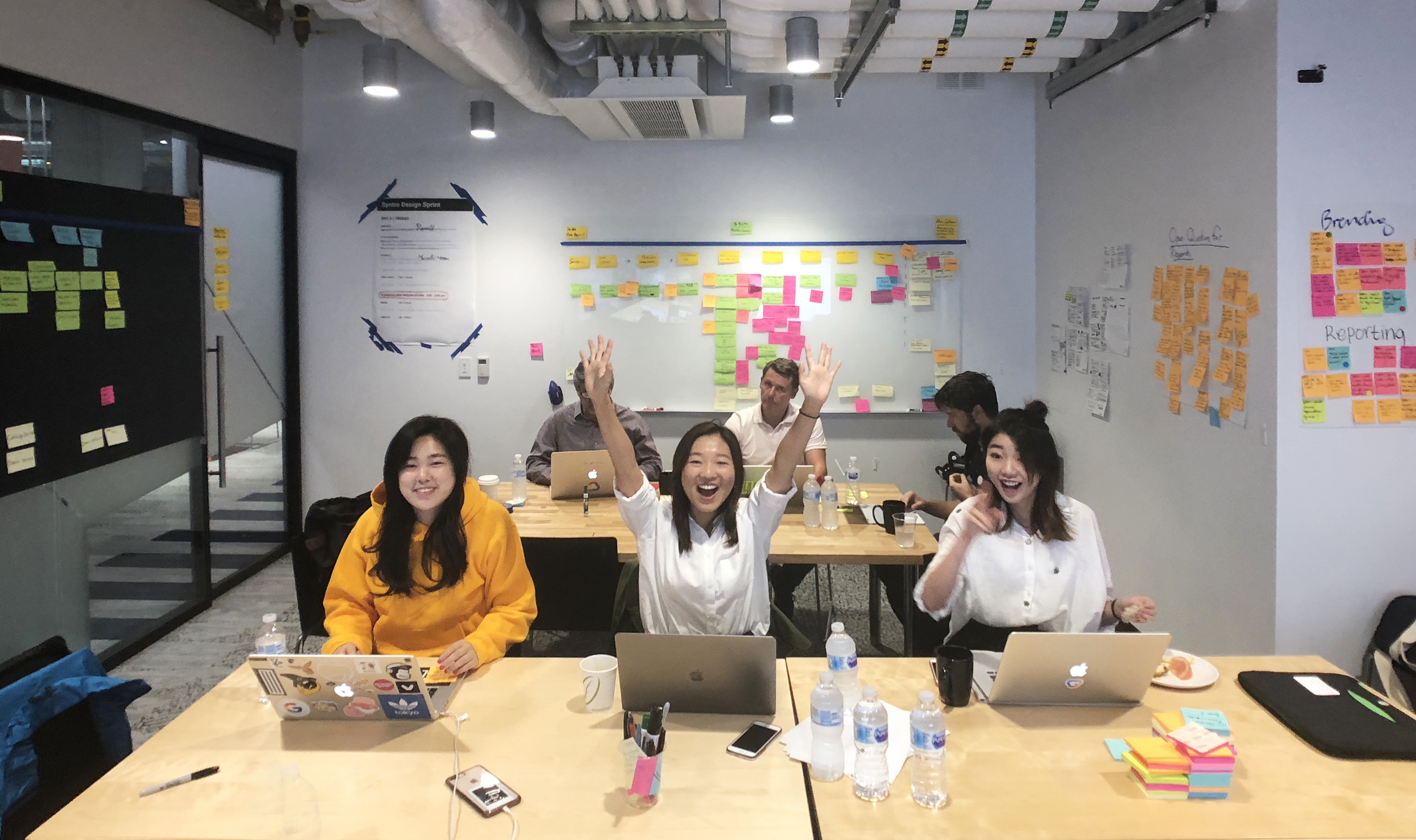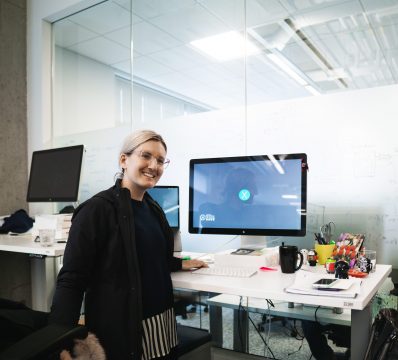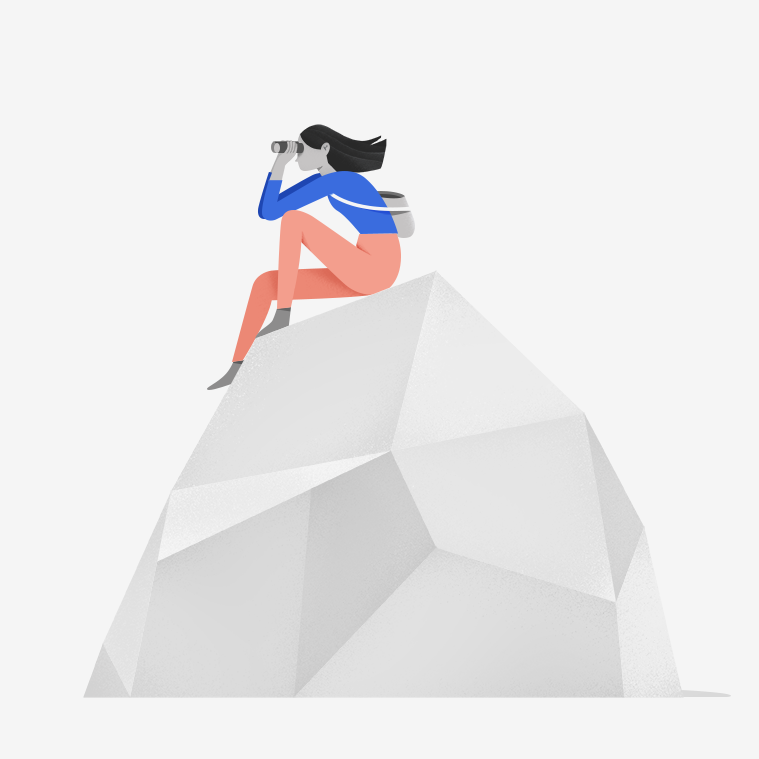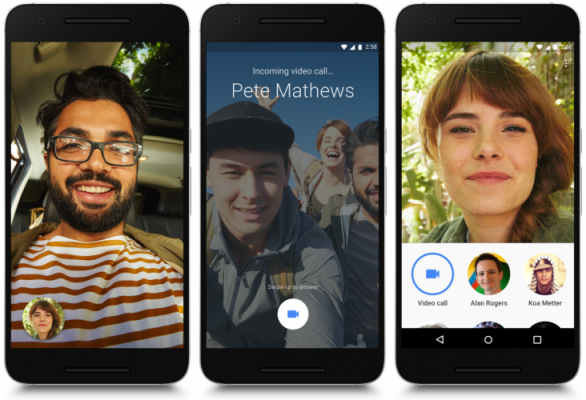Roy Kim (UW IxD 2015), Stephanie Smythies (UW VCD 2012) and Jennifer Kim (UW VCD 2016) work at Google in the Seattle office. Roy and Jennifer work on Google Cloud Platform; Stephanie works on Google Duo. Other UW Design alums who work at Google include Tanya Test (UW VCD 2010), Felix Wang (UW VCD 2012) and Sean Wen (UW VCD 2008) in the NYC office; Rishi Agarwal (UW IxD 2016) and Allyson Tong (UW VCD 2007) in the San Francisco office; and Tate Strickland (UW M.Design 2017) in the Zurich office.
Being Google-y
Google
Roy Kim, Jennifer Kim +
Stephanie Smythies
Aug 24 2019

Part One
The Journey to Google
How did you get your job at Google?
Roy: The fun story is that all of us were hired by the same manager—but at different times. I was an intern on Google Cloud Platform, then was hired full-time onto the same team when I graduated, in 2016.
Jennifer: I also started as an intern here then converted to full-time. I applied for the internship online, and was initially rejected—but after two months, a recruiter re-contacted me and asked me to interview, which was wonderful!
Stephanie: I graduated from the UW VCD program in 2012, and had been working at a different studio before starting as a contractor at Google. My manager reached out to faculty in the UW Design program, and [Professor] Karen Cheng sent an email to an alumni list that Google was looking for a full-time visual designer.
How did you get interested in design?
Stephanie: I like bringing structure and foundation to things that otherwise don’t have it. Order brings peace to my life, and design helps me cope; I can take these big problems and bring order to them.
Jennifer: I actually didn’t know about design until my freshman year at UW. I did grow up in an art-focused family: my dad was an architect, my mom studied art history, and my sister is a graduate from the industrial design program at UW.
I saw that design was both artistic and practical, and people can benefit from design. After taking that class I tried my best to get into the program, and I did. I had a lot of fun and a lot of
sleepless nights…
I would see my sister come home from UW with sanding powder all over her clothes. She showed me her projects, talked about what she was doing and why she enjoyed it. I thought it sounded really interesting, so I took the entry-level design course at UW, DESIGN 166. It was shocking—a new world. I saw that design was both artistic and practical and that people can benefit from good design. I had a lot of fun…and a lot of sleepless nights!
Roy: I actually used to be a math major. I had this idea that I had to be an engineer—but my grades were terrible. My best friend told me “stop being an idiot, find a major that you can actually succeed in.” So I decided to take DESIGN 166. The night before the final project for 166 was due (the final project was to design lightbulb packaging), I was working on what I thought was my final iteration, but I accidentally ripped part of the packaging. I really wanted to get in, so I decided to skip my math final in order to fold up another package and make it perfect.
166: Design Foundations
Roy Kim's package for three light bulbs. Students may use up to three pieces of corrugated cardboard, but no glue or fasteners.

Part Two
Working at Google

What’s a “typical day” at Google?
Stephanie: My day is pretty structured. In the morning, I don’t even try to look through email. My morning is for design work because that’s when my brain is most active. I try to go for a run during lunch to stay active. In the afternoon I talk to people and go to meetings. That’s the nice thing about working here. You have control of your schedule. Some people come in super early because that’s when they’re most productive—and there’s others that stay later. It’s really flexible.
Jennifer: I totally agree. Flexibility and the lifestyle here are great. There are gyms, classes, workouts. No hard rules on when you’re supposed to come in or leave, as long as you get your work done. Everything is available at the office. They have food and micro-kitchens. There’s this thing called ‘the Google 15’ because there is so much free food!

— Stephanie
What’s the culture like at Google?
Jennifer: Google is a very creative place. We look for people who are “Google-y”—people who are really open, diverse creative, and willing to collaborate—instead of being super competitive. The culture here avoids super strong egos or arrogance. We look for people who are open-minded, able to accept feedback, open to discussions, really curious.
Stephanie: You would expect that anyone working at Google would be smart, accomplished and have a strong skillset—and all of that is important—but it’s also very much about personality. My manager says that he hires “80% personality and 20% skill.”
Personality is really important because of team health—if one person stresses out, their mentality spreads and everyone wants to quit. You need to be a strong person, you need to have an opinion, you need to know when to push back, but you also need to know when to let go. It can be very hard because sometimes you do get emotional. One of the hardest parts of the job is knowing how hard to push when you really feel for something. It takes a certain personality to be open minded, to not take offense.
Part Three
Design at Google

What are your favorite projects that you’ve worked on at Google?
Jennifer: I worked on a branding project for the Google Cloud Platform Marketplace, which is our storefront for users to browse and deploy different software packages that run on Google Cloud. It was a fun challenge to brand something that maintained the maturity and scale of the Enterprise business (which is focused on business users) while still being fun and Googley. Visual design at Google can be challenging because there is already such an established brand. I think the trick is to use the established brand language for consistency among other Google products, but let the individual story – the content – be unique.
In this project, I focused on the story of “discovery” and “endless opportunities” to show a unique delight to our Enterprise users. The rebrand was well received after the launch. The data showed that the new design improved both product discoverability as well as overall usability. I also got to collaborate with one of my favorite illustration agencies (Oddfellows) for production, which was awesome. Their working style is completely different from ours. It’s always fascinating to see the contrast.
Roy: About a year ago, I realized that our project managers need to design things sometimes—for example, when they have ideas, they don’t necessarily always want or need to work with a designer. So, on my own I made a component library within Google Slides called “Slicker Sheets.” It’s like slicker sheets for slides. My team started using it a lot, then people from other teams starting using it too. I think that was my most satisfactory project. I wasn’t told to do it; I just did it on my own initiative.
Stephanie: It’s hard to pick one project—I like a lot of projects. No project is the same and that’s what keeps me interested and invested. I’ve been here for a while, but every time I get a project I still think, “what am I going to learn from this?” There’s a lot of opportunities and everything has something different to offer.
I’ve learned from every single project I’ve done. You learn different things from each project—how to work with different team members, ways to communicate better, or how to create different timelines.

What are some challenges in your work at Google?
Jennifer: It took me a long time to learn how to manage myself. There’s nobody who tells you what to do; there aren’t set deadlines. It’s your responsibility to define a timeline that works for you. Your manager will give you direction at the beginning, but it’s up to you to make decisions about what you can get done. It’s a lot of responsibility and once you start working, you can get overwhelmed.
Roy: Communication is so key. You need to be able to communicate your designs really well, to articulate why you made the decisions you did. Communication is a skill you can always get better at.
Android 1.6 Donut
UW Design Alum Roy Kim (IxD 2015) at the sculpture garden of the Google campus in Mountain View California. A new colorful sculpture is installed each time a new version of the Android operating system is developed.

Part Four
Learning from Design School
"[While in school] you want to connect with many people, share ideas and build relationships—there can be so many opportunities from doing that." —Jennifer
What did you find most valuable about your education?
Stephanie: Design school is about developing the ability to defend your work with reasoning—so that people can see its merits. Design school also helped me understand there is never a finished thing–you’re always able to critique and improve your work.
Roy: I think naturally I’m a pretty sensitive person, but at UW I learned to separate myself from my work. Critique isn’t about saying that a person is bad, it’s about saying that a design isn’t really doing what it needs to do. I was surprised to find a lot of people actually can’t take critique. But at UW, faculty—Karen Cheng especially—was so brutally honest—I learned how not to get my feelings hurt.
Jennifer: Some of the faculty said, “you have to learn to throw away your baby”—and your baby is your design work. It’s so true. I’m really thankful for that lesson. Sometimes you spend months working on a project—but one day it gets scrapped, and you have to start all over.
For example, Google Cloud marketplace is being redesigned and that was one of the first projects that I worked on, so it was my Google baby. But I didn’t feel sad at all when the project got re-assigned. I knew it was going to a better place, and my peers will do a good job on it. Design is always improving. There’s always a better design.
Meet as many people as you can, do internships, talk to people about design…those face-to-face interactions
go a long way.
What do you wish someone would have told you while you were in school?
Roy: When I went to school, I feel like the field of interaction design really encouraged projects that were blue sky, really out there. I think that’s important, but it’s also important to think about the real day-to-day work. When we look at candidates, it’s nice to have visionaries, but we also need to know that you can do the practical jobs too. Balancing these two aspects is important.
Jennifer: Stay positive. It can be really discouraging when you’re a student in the program for several years—you’re in critique and getting negative feedback. But you need to remember that school isn’t everything. You want to connect with many people, share ideas, and build relationships—there can be so many opportunities from doing that. Professionals are learning just as much as students are, so you’re both at the same level of curiosity when it comes to design. You don’t have to feel so far away from a professional life. You should feel confident and positive.
Stephanie: Don’t underestimate yourself—and learn how to make connections. Meet as many people as you can, do internships, talk to people about design. It’s those face-to-face interactions that go a long way.
Stay Positive
Roy Kim, Stephanie Smythies and Jennifer Kim at the Google Kirkland campus, by the signage system designed by Professor Kristine Matthews (each building is identified by a different texture).

